...And Then Paints A Picture Of Aviation's NextGen
Future
(Editor's Note: Below is the unedited text of the speech
given by Ruth Leverenz, acting Deputy Administrator of the FAA
(shown center, right) before the International Aviation Womens'
Association on Friday.)
Good afternoon, and thank you, JoAnne
[Young], for that kind introduction. I'm pleased to represent
Secretary Peters and our acting administrator, Bobby Sturgell, here
today.
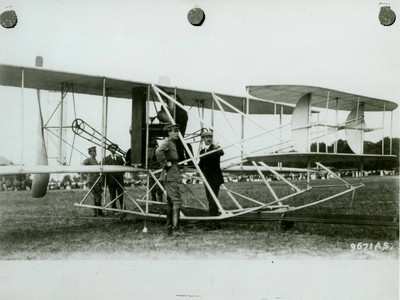
I'd like to start of with a bit of a
slide show. It's the FAA's 50th anniversary. In the course of the
presentations we've made over the year, we've amassed a few slides
that really tell a story. The story they tell is what I'm here to
talk about.
That's Orville and Wilbur in 1903
(above).
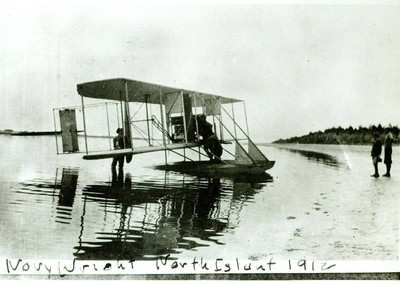
Orville demonstrating his flying
machine to the Navy in 1912.

The mail must go through in 1926. At
the controls is Charles Lindbergh.
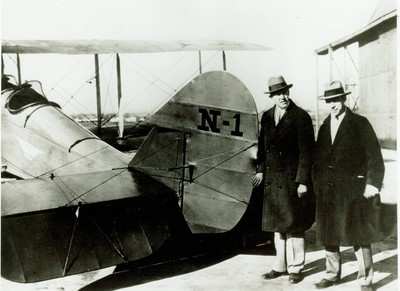
That's the first assistant secretary
of commerce for aeronautics, by the name of Bill McCracken, on the
left. N-1 is now an FAA G-IV.
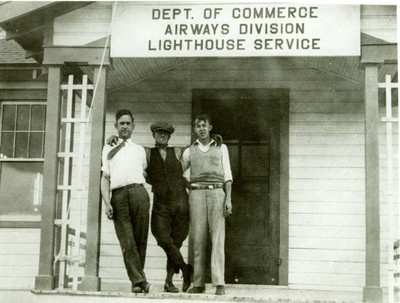
This lighthouse helped "control"
traffic from New York to Cleveland in the late 1920s.
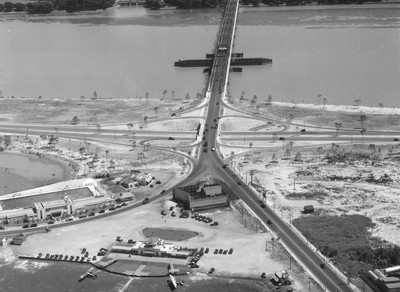
This is DC's first airport, Hoover
Field, which opened in 1926. It's on the Virginia side of the 14th
Street Bridge, where the Pentagon now sits. Back in the day, the
airport's one runway was intersected by a busy street, which had
guards posted to flag down traffic during takeoffs and
landings.
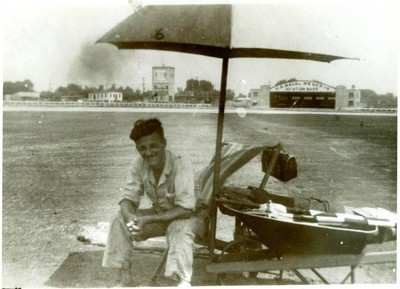
Archie League, America's first air
traffic controller. This is 1929, Lambert Field.
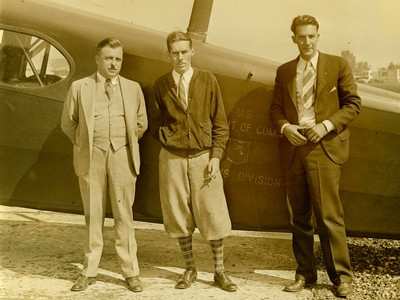
Early flight inspectors, circa
1920s.
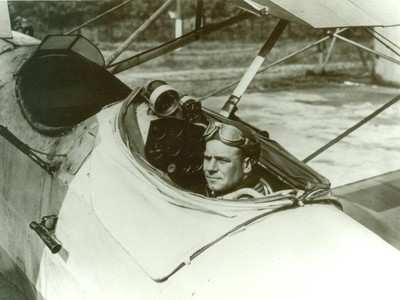
That's Jimmy Doolittle in 1929. On
this flight, he became the first pilot to use only instrument
guidance to take off, fly a set course, and land.

Air navigation at Chicago Center in
1936.
 It's nice to look at
all those old slides. You can really see how far we've come -- how
far aviation itself has come. We went from the place where a major
accident occurred every two or three weeks to where we are today.
Right now, there is no common cause for an accident, because we've
picked off all the low-hanging fruit. Today's accident is often a
complex set of dominoes that fall in precisely the right way, and
an accident results. If you remember ValuJet, you know that while
oxygen canisters were a "cause," you also know that a string of
people made mistakes that lead to the crash. If you take away any
of those elements -- the mislabeled boxes, the failure to inspect
the boxes, the failure to inspect the boxes as they were put in the
forward hold, the failure to secure the spare tire in the forward
hold -- that plane probably does not crash.
It's nice to look at
all those old slides. You can really see how far we've come -- how
far aviation itself has come. We went from the place where a major
accident occurred every two or three weeks to where we are today.
Right now, there is no common cause for an accident, because we've
picked off all the low-hanging fruit. Today's accident is often a
complex set of dominoes that fall in precisely the right way, and
an accident results. If you remember ValuJet, you know that while
oxygen canisters were a "cause," you also know that a string of
people made mistakes that lead to the crash. If you take away any
of those elements -- the mislabeled boxes, the failure to inspect
the boxes, the failure to inspect the boxes as they were put in the
forward hold, the failure to secure the spare tire in the forward
hold -- that plane probably does not crash.
But it did. The human factors element
is something that we'll never really "solve," because as we all
know, when there's a human in the system, anything can happen.
Today, the "anything" that happens is
"safety" 99 percent of the time. And that's a very good thing. But
getting back to the pictures, if you noticed what I noticed, then
you noticed that we are not in the picture. Aviation has, and I'd
submit, continues to be dominated by men. Nothing wrong with that.
When you run fast, you deserve to finish first. And I'm not taking
anything away from the Bessie Colemans and the Amelia Earharts of
the world. I'm just saying that for many, many years, women weren't
a major factor.
Well, we are now. Look around. There's
much more work to be done, but I'll talk about that in due
time.
I've spotted a few trends over the
years. I see lots of networking, and that's good. When you're
young, your energy and your productivity and the results that come
about from your efforts should be your calling card. I'd encourage
you to give that tip to the next generation. It's very important to
know people higher up the chain, but it's more important for them
to know you because of your reputation for success.
And that leads to mentoring. If you're
not mentoring several young folks, I'm talking about women and men,
you're missing a great joy and you're probably short-circuiting a
few careers. I don't know everyone in this room, but there are two
women here who in my judgment go above and beyond in terms of
mentoring. Kate Lang is FAA's deputy associate administrator for
airports. She runs a $3 billion grant program. In addition to being
a top-notch lawyer, Nancy LoBue is the FAA's acting assistant
administrator for policy. She handles reauthorization, the
environment and strategic planning.
Both of these women have jobs where
the phone rings and it's the White House or the Hill or the New
York Times calling. But they take time to mentor several people who
are coming up the ladder. They do it right, and I'm proud to serve
with them
I hope that encourages you to mentor.
Give the younger ones time to bounce things off you. Let them hear
about what happens when you put your hand on the stove without them
actually having to go through it. Most of the younger generation
knows that they're bulletproof. The signs like "Warning! 10,000
volts!" don't apply to them. You don't know anybody like that, do
you?
 My oldest son is in
his second year of medical school. He has a habit of drinking a pot
of coffee every night at 10 p.m. so he can keep awake to study.
I'll admit I've opened my mouth to say, "You know, coffee at night
is generally a bad idea, and a pot of coffee is a really bad idea,"
but he held his hand up, like this. "Mom, I know what I'm doing."
"OK, son." Sometimes the mentees are unwilling, especially if they
know you've seen them in diapers, but that's how that story
goes.
My oldest son is in
his second year of medical school. He has a habit of drinking a pot
of coffee every night at 10 p.m. so he can keep awake to study.
I'll admit I've opened my mouth to say, "You know, coffee at night
is generally a bad idea, and a pot of coffee is a really bad idea,"
but he held his hand up, like this. "Mom, I know what I'm doing."
"OK, son." Sometimes the mentees are unwilling, especially if they
know you've seen them in diapers, but that's how that story
goes.
I'm also hopeful that you're involved
with feeding the pipeline -- making sure that we have enough people
to fill the high-tech jobs that are coming on line. In the United
States alone, more than 60,000 aerospace engineers will retire in
the next 10 years. That's not a bow wave. That's a tsunami.
At the FAA, we're looking to do
something about it. We're deeply involved with a project run by the
Department of Energy -- the Real World Design Challenge. The goal
is to align secondary education with 21st Century workforce needs.
We hope it will strengthen professional development for teachers by
providing training and facilitating industry collaboration.
So now you're saying, OK, I get it.
What's the challenge? We're challenging students, and their
teachers, to design the next generation wing. Kids get the
engineering challenge of a lifetime. Teachers get professional
development. They both get to work with science and engineering
mentors from government and industry. They're working on a real
aviation challenge defined by the industry. We're giving them
professional engineering tools to do it. A couple of companies in
the great Northeast have donated a million dollars worth of
software.
Ten states will be participating in
the Challenge this first year. They are: Vermont, Connecticut,
Massachusetts, Oklahoma, Kansas, Washington, Hawaii, Virginia,
Minnesota and Pennsylvania.
There's no reason for you not to be
involved in a program like this. We have obligations to the next
generation that go beyond mentoring, and this program is one of
them.
Lastly, let me turn to the biggest
thing on aviation's plate -- NextGen. In a nutshell, NextGen is the
FAA's plan to modernize air traffic control. We're moving away from
a system that's tethered to the ground. Instead, we're moving to
satellites. For goodness' sake, we've been to the moon and back
more than once. Isn't it time we gave passengers and pilots more
than a peek at the technology that made it possible?
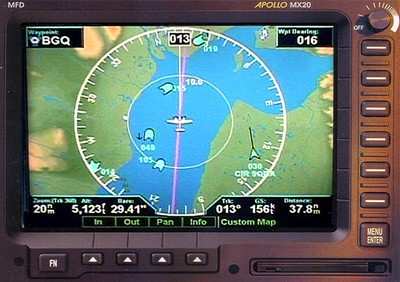
Let me tell you, it's in high gear.
The introduction and widespread use of precision navigation tools
represent the first step in our transition to NextGen. We are
focusing deployment of RNAV and Required Navigation Performance,
RNP, around our most congested airports. One of our earliest
adopters is Alaska Airlines. With RNP approach procedures at Palm
Springs on the West Coasts, Alaska Airlines reported that 10
percent of their flights were classified as "saves" in the first
quarter of this year. Those are flights that would have been
otherwise diverted to alternate airports because of bad weather. A
"save" translates directly to savings for the carrier -- emissions,
time, passenger convenience.
Partnerships with operators equipped
to perform these procedures are yielding the biggest benefits from
increases in operational efficiency and reductions in fuel use and
emissions. We are also seeing benefits today from the introduction
of Optimized Profile Descents that have shown fuel savings
averaging about 50 to 60 gallons of fuel for the arrival portion of
flights. It reduces as much as 1,200 pounds of carbon dioxide per
arrival.
NextGen doesn't stop there. We have
other demonstration programs, such as the Atlantic Interoperability
Initiative to Reduce Emissions and the Asia-Pacific region, the
Asia and South Pacific Initiative to Reduce Emissions. That's AIRE
and ASPIRE for those of you who track acronyms. Both are showing
significant fuel savings in oceanic airspace.
Other near-term benefits stemming from
targeted implementations of the NextGen acceleration initiative
include the introduction of surface management tools at JFK. We're
working with the Port Authority and the airlines to provide
information about surface traffic. We provide intel on both
movement and ramp areas on the airport to Airline Operation
Centers, air traffic controllers and the FAA Command Center. This
information gives common situational awareness that will allow
airlines to better manage movement of their aircraft in crowded
ramp areas.
Farther down the East Coast, we plan
to continue these activities in an integrated test bed approach
that focuses on Florida, the east coast, Texas, and the Gulf of
Mexico. That area is also taking advantage of early ADS-B
deployment. We have more than 20 partners from the airlines,
industry, academia, and other government agencies that are involved
in demonstrating the effectiveness and safety of integrated NextGen
capabilities.
ADS-B has made quite a bit of progress
over the last year. Since the national contract was awarded last
summer, the program has deployed the ground infrastructure in the
Southern Florida key site area. For the first time, the system has
equipped pilots to receive traffic and weather in the cockpit for
enhanced situational awareness. We'll make a decision for essential
services for commissioning into the National Airspace System in a
month.
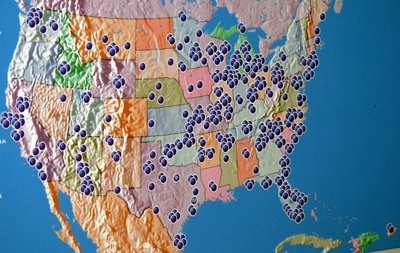
While the agency has been busy with
deploying the ground equipment, we are also simultaneously working
on the rulemaking for ADS-B. The Notice of Proposed Rulemaking was
published a year ago. The comment period closed in March. We will
consider all the recommendations from the aviation community in
developing the final rule, which we estimate will be published in
2010. There was quite a bit of discussion about equipage and the
need for dual frequencies and digital data communications. That's
being looked at right now.
Let me close now with just a few more
thoughts, all of which relate back to the pictures from the slide
show. We want women in the pictures for the 100th anniversary, and
it needs to be happening now.
How do you get in the picture? Commit
to being up to speed with NextGen. If you don't know NextGen,
you're not going to be in the picture. NextGen isn't just
technology; it's the next generation of controllers, pilots,
mechanics, engineers, aviation lovers, et cetera. Mentoring and
networking are things we need to do more of. And the Real World
Design Challenge? That's a sure-fire way to get into the picture.
If we want to get in the picture, we've got to belong there. There
are more than a few people this room who already do. I look forward
to seeing a group shot that includes all of us.
 ANN's Daily Aero-Term (04.14.24): Maximum Authorized Altitude
ANN's Daily Aero-Term (04.14.24): Maximum Authorized Altitude ANN's Daily Aero-Linx (04.14.24)
ANN's Daily Aero-Linx (04.14.24) Classic Aero-TV: 'We're Surviving'-- Kyle Franklin Describes Airshow Life 2013
Classic Aero-TV: 'We're Surviving'-- Kyle Franklin Describes Airshow Life 2013 Aero-News: Quote of the Day (04.14.24)
Aero-News: Quote of the Day (04.14.24) Airborne 04.09.24: SnF24!, Piper-DeltaHawk!, Fisher Update, Junkers
Airborne 04.09.24: SnF24!, Piper-DeltaHawk!, Fisher Update, Junkers
















